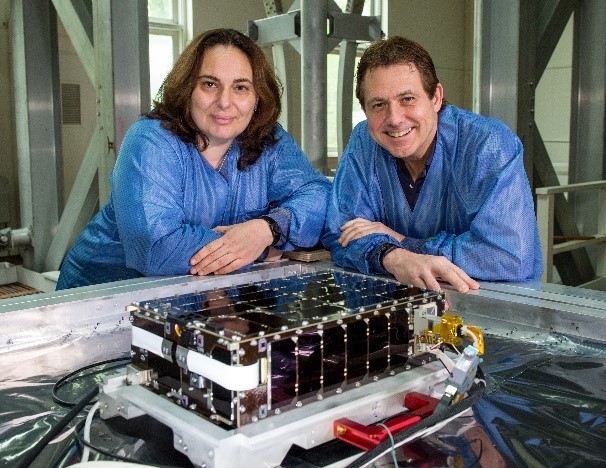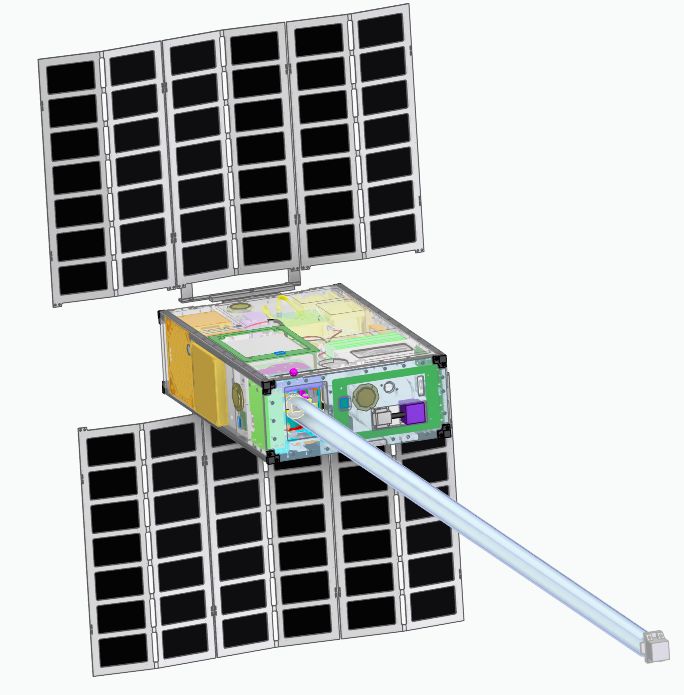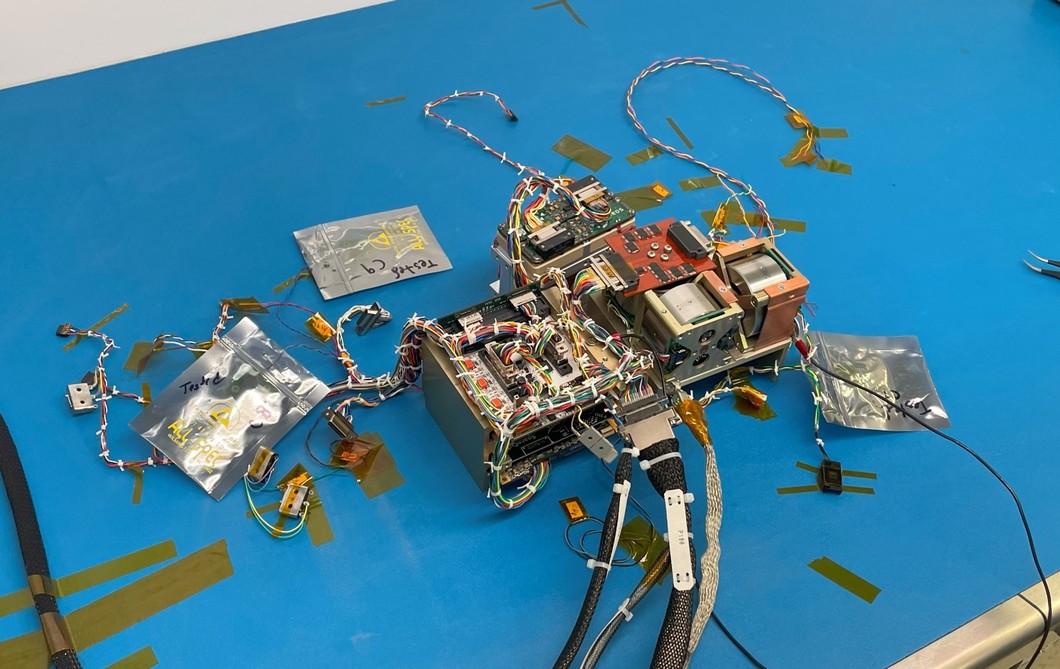
Dione is a GSFC 6U CubeSat led by Principal Investigator Dr. Eftyhia Zesta. The mission is funded by the NASA Science Mission Directorate Heliophysics Division. It is being done in collaboration with Catholic University of America, Utah State University, and Virginia Polytechnic Institute and State University. Dione's primary objective is to quantify how the ionosphere and thermosphere respond to electromagnetic and kinetic energy inputs from the magnetosphere. This energy input is a key parameter in all physics-based models of the Ionosphere-Thermosphere (IT) system and has long been identified as one of the parameters with the largest uncertainties. Dione will, for the first time since the DE2 mission, provide simultaneous measurements of energy input and IT responses. The energy inputs will be quantified as Poynting flux and electron fluxes, while the IT responses will be quantified as ion drifts and temperatures and neutral density and composition. Dione will provide in situ measurements and through its precession will sample all local times and latitudes and under various geomagnetic conditions. Dione will also establish conjunction passes over key ground instrumentation, specifically auroral imagers and radars, and use conjunction observations to study theories of magnetosphere-ionosphere coupling and IT heating. Global MHD models, kinetic models of precipitating electron fluxes, and models of ionospheric conductivity will be used to understand how the incoming electron fluxes and Poynting flux heat the upper atmosphere and result in the observed aurora and neutral heating. Dione's sensor package includes four instruments: a miniaturized fluxgate magnetometer system that will provide science-grade magnetic field measurements with two sensor heads, a Gridded Retarding Ion Drift Sensor (GRIDS) that will measure vector plasma drifts and deduce the in-situ E-fields, a Dual ElectroStatic Analyzer (DESA) that will measure precipitating particles as well as upgoing secondary electrons, and a Neutral Mass Spectrometer (NMS) to measure total neutral density and composition. Dione will be a prototype for future constellations in that different configurations will provide global and localized measurements of energy inputs and IT responses in a variety of scales.

The miniaturized fluxgate magnetometer, NMS, and DESA instruments are all GSFC in-house developments. The miniaturized fluxgate magnetometer and NMS instruments have had flight heritage on the Dellingr mission. The magnetometer will be using a roll out boom in development by ROCCOR that will be approximately 1 meter in length. The DESA instrument is a new development and carries the most risk. The GRIDS instrument is being built by Utah State University and will be tested by Virginia Tech prior to delivery to GSFC. There is also a GSFC technology demonstration called the Spacecraft Potential Sensor (SPS) that will be used to understand the CubeSat charging environment. The spacecraft bus will comprise of several COTS components from vendors such as Hyperion (star tracker and GPS receiver), Sensonor (IMU), GOMSpace (fine sun sensor and magnetometer), Sinclair Interplanetary (reaction wheels), Ibeos (EPS and batteries), and Vulcan Wireless (radio and antenna). The flight computer is being developed by GSFC along with the necessary interface boards. Trades are ongoing with respect to incorporating articulating solar arrays in order to maximize science collection. The instruments and spacecraft will be integrated and tested at GSFC.
Dione has constructed a flatsat using flight hardware and begun testing each of the components. They will then move from the flatsat to flight integration and test of the spacecraft. They are on schedule to deliver for a SpaceX launch opportunity in April, 2025.



